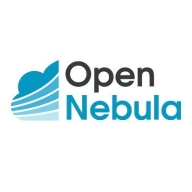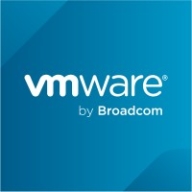

VMware Aria Automation and OpenNebula are competitors in the cloud management space. VMware Aria Automation holds the upper hand with extensive automation features and robust integration capabilities, which can be critical for enterprises seeking comprehensive cloud management.
Features: VMware Aria Automation's standout features include mass parallel administration, remote CLI access, and vendor-specific integrations such as SaltStack for faster deployment. It offers advanced orchestration capabilities and is particularly strong in cloud management. OpenNebula's simplicity and lightweight design are key features, making it highly suitable for straightforward deployments. It effectively supports various hypervisors and is preferred for on-premises deployments.
Room for Improvement: VMware Aria Automation requires better documentation, more intuitive UI, and enhanced template management. There's also a need for improved integration with platforms like Azure. OpenNebula needs enhancements in documentation and managing complex environments, alongside improvements in its marketplace and template creation support.
Ease of Deployment and Customer Service: VMware Aria Automation supports both on-premises and hybrid environments, offering knowledgeable technical support, although it can vary in responsiveness due to customization capabilities. OpenNebula is user-friendly for on-premises deployments and relies on community-based support, which is collaborative but lacks direct support compared to VMware's tiered system.
Pricing and ROI: VMware Aria Automation is a paid product and is often seen as expensive but provides valuable features and integration capabilities that can justify the cost for enterprises. It offers potential ROI through improved automation and reduced deployment times. OpenNebula, being open-source, offers a cost-effective alternative with lower overhead, providing good value for those seeking flexibility without significant investments, though potentially offering less enterprise-level functionality.
| Product | Market Share (%) |
|---|---|
| VMware Aria Automation | 9.4% |
| OpenNebula | 5.7% |
| Other | 84.9% |


| Company Size | Count |
|---|---|
| Small Business | 7 |
| Midsize Enterprise | 6 |
| Large Enterprise | 3 |
| Company Size | Count |
|---|---|
| Small Business | 32 |
| Midsize Enterprise | 24 |
| Large Enterprise | 130 |
OpenNebula provides the most simple but feature-rich and flexible solution for the comprehensive management of virtualized data centers to enable private, public and hybrid IaaS clouds. OpenNebula interoperability makes cloud an evolution by leveraging existing IT assets, protecting your investments, and avoiding vendor lock-in.
OpenNebula is a turnkey enterprise-ready solution that includes all the features needed to provide an on-premises (private) cloud offering, and to offer public cloud services.
VMware Aria Automation is a cloud management tool that allows companies to simplify their cloud experience through a modern automation platform. The solution is designed to deliver self-service clouds, multi-cloud automation with governance, and DevOps-based security and infrastructure management. It helps organizations improve IT agility, efficiency, and productivity through its various features.
VMware Aria Automation has multiple use cases that include the following:
VMware Aria Automation Features
VMware Aria Automation has various features that allow users to easily perform operations. Some of the solution's capacities include:
VMware Aria Automation Benefits
VMware Aria Automation offers its users various benefits. Some of the biggest advantages that the solution brings to companies that utilize it include:
Reviews from Real Users
Awais J., CTO/CEO at a tech services company, likes VMware Aria Automation because it saves a lot of time, provides more visibility, and has extensive automation capabilities.
An IT consultant at a government rates VMware Aria Automation highly because the product gives you flexibility to analyze and consume resources.
We monitor all Cloud Management reviews to prevent fraudulent reviews and keep review quality high. We do not post reviews by company employees or direct competitors. We validate each review for authenticity via cross-reference with LinkedIn, and personal follow-up with the reviewer when necessary.